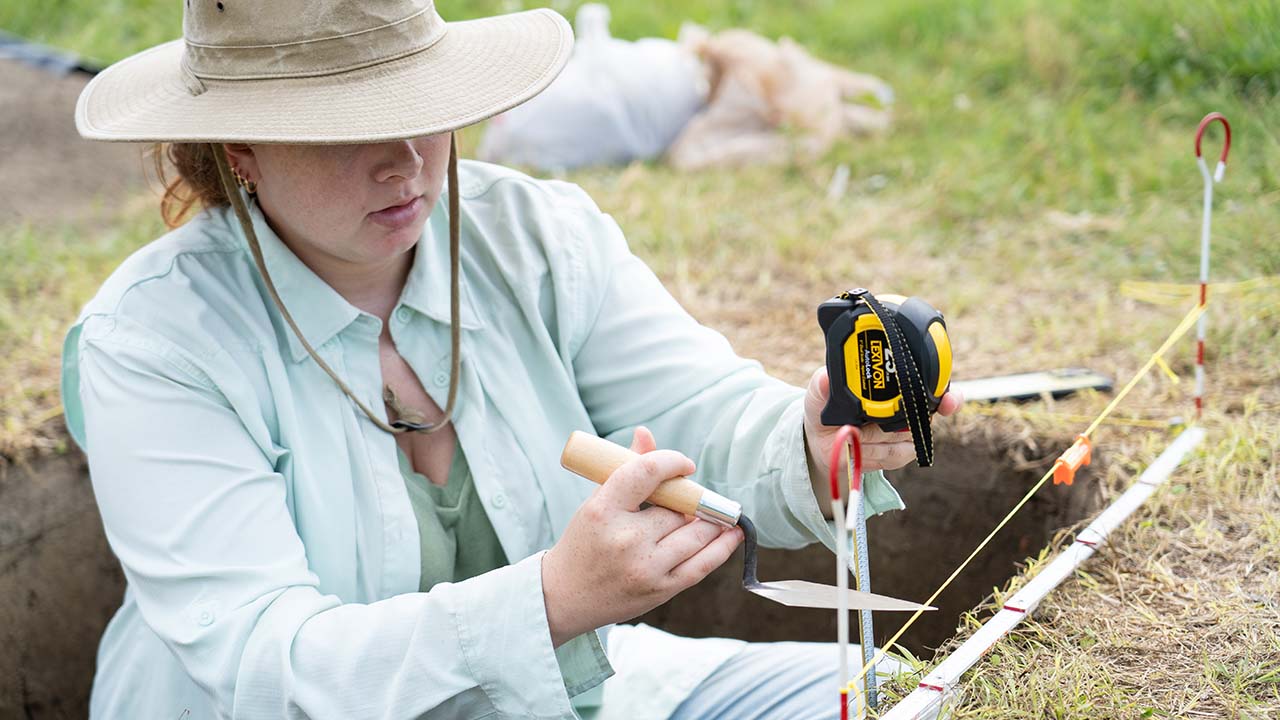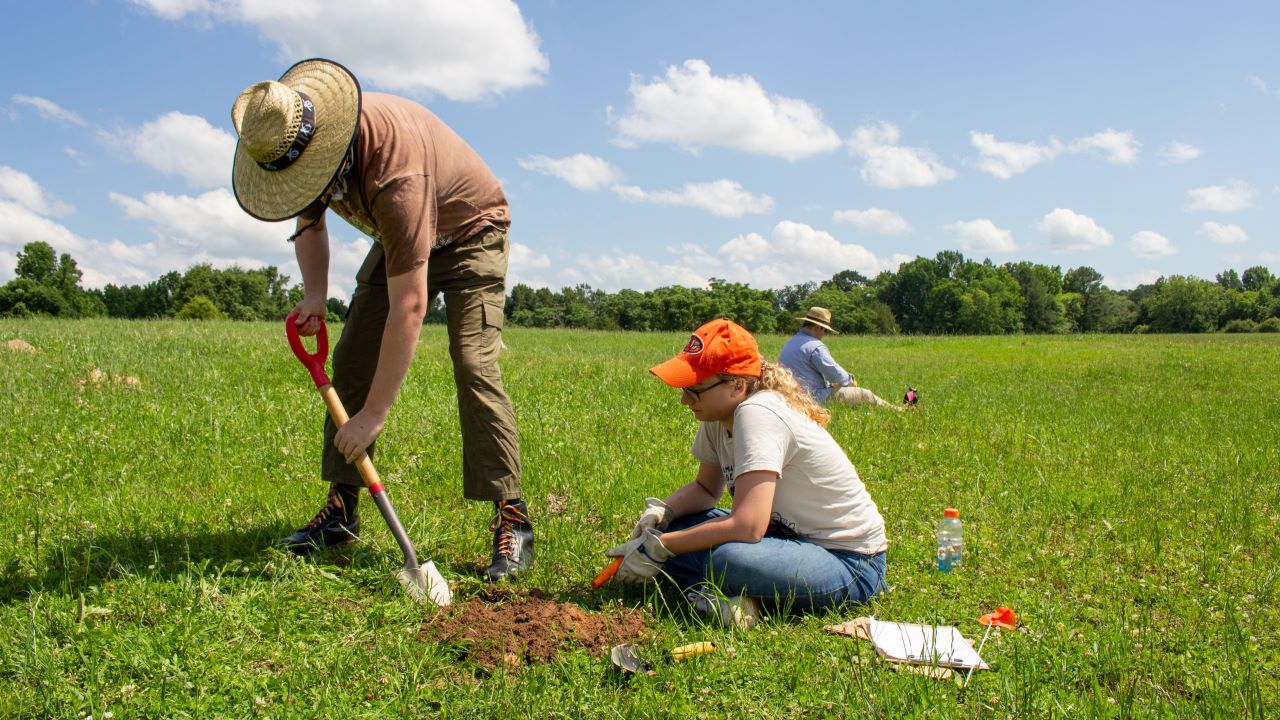content body
In today’s highly technical and digital world, there’s something distinctly satisfying about digging in an Alabama pasture for a chance to glimpse history.
Businessman and philanthropist Matt Ginn certainly thinks so anyway — so much so that he and the Ginn Family Foundation recently funded an Auburn archaeology field school on their property near Notasulga, Alabama. The project, led by Meghan Buchanan, Auburn archaeologist and anthropology associate professor, has the potential to unearth a one-of-a-kind discovery: Camp Watts, a Civil War-era conscription camp.
“I have really found a love for studying and digging in the dirt,” Ginn said. “It has already been amazing and whether we find anything or not, it’s the experience, the teachings, the learnings that we are displaying here that this is really about.”

Auburn’s First Lady Tracy Roberts, Matt Ginn and his wife, Michelle, and College of Liberal Arts Dean Jason Hicks participated in archaeological exploration last summer at the Ginn family land in Notasulga, Alabama.
The Auburn connection
It all began more than 15 years ago when the Ginn family, led by Sam Ginn ’59, a pioneer in the telecommunications industry and the namesake of the Samuel Ginn College of Engineering, purchased several parcels of land in Alabama. Among the properties is a 330-acre piece of farmland approximately 12 miles southwest of Auburn and thought to be the site of Alabama’s Camp of Instruction No. 1, established in 1862. If confirmed as Camp Watts, the Ginns’ Notasulga property will be home to the only intact Civil War conscription camp in the nation.
Newly drafted soldiers were trained at conscription camps throughout the South during the Civil War and records indicate that Camp Watts housed and trained up to 2,000 soldiers at any given time. Although the Ginns discovered two Civil War-era tombstones — one for a confederate soldier and one for a union soldier — when they purchased the land, it wasn’t until they recently considered selling the property that Matt Ginn realized there might be something more buried beneath this particular patch of land.
That’s when he started researching. His investigation led to a graduate student paper that eventually guided him to Buchanan, Auburn’s only North American archaeologist.
“We didn’t just want to know what was on that land for our sake,” Ginn said. “We wanted students to benefit from this. We wanted this to be an Auburn adventure.”
The crucial discovery
Buchanan receives countless emails about potential historical findings on properties. Although she can’t respond to all of them, there was something special about Ginn’s email.
“He had done a lot of research, so we started talking,” she said. “I had been meaning to buy a metal detector so I thought, maybe we can just go out one weekend and see what we can find out there.”
In addition to the headstones on the property, the Ginns and Buchanan found evidence of many more potential graves and other substantial artifacts, including a Civil War-era bullet, a harmonica reed and a brass toe-tap, potentially from a shoe or boot.
They were hooked.
Next came examining aerial photos from the 1900s, lidar images, other small surveys, followed by a generous Ginn Family Foundation gift to create an archaeology field school. The Ginns were determined to discover the history beneath the surface of their land and asked Buchanan to help them find it. With a full teaching load and other academic responsibilities, she encouraged them to consult a cultural resources management firm to get faster results.
“But they wanted to do this through Auburn to create this amazing opportunity for students,” Buchanan said. “Because they love Auburn.”
The project philanthropy built
Intent on learning whether their property housed Camp Watts during the 1800s, the Ginns funded the Camp Watts Archaeology Field School during summer 2024.
Students from a variety of majors including anthropology and history experienced firsthand the work of archaeology — using metal detectors, testing soil, washing and cataloguing artifacts. These experiences equipped them for future employment and gave them a taste of the profession many planned to pursue. And this was the exact experience Matt Ginn hoped the family’s gift would provide.
“As people age, I think they understand that it's their responsibility to empower the next generation,” he said. “And the value of giving students a chance, the value of what I saw on their faces when they started digging out there makes me emotional. It's a very powerful thing to give people with passions and abilities the opportunity to pursue them.”
Discovering the structures and artifacts that existed on the land is just one piece of the puzzle. Buchanan hopes their discoveries will eventually lead to an even greater understanding of the people who lived and worked in the conscription camp.
The stories of big history are told often. Significant dates, wars and major events are reflected in the human record, but the stories of everyday people living during tumult —what Buchanan calls the “little histories” — are overlooked. And these are the stories she hopes to share about Camp Watts.
“Philanthropy creates space for us to tell the other histories — the ones that haven’t been told,” she said. “The big histories are built on all these lived experiences, these lives that don’t necessarily get written about, but archaeology is a way to access their stories.”
Donor support can also create the freedom to explore all areas of a project, not just those tied to an application or budget, and develop collaborative partnerships that are often not possible with traditional research grants.
“I’ve never seen people as excited about finding rusty nails as they are. It has just been a lot of fun to have funders who are not just there to provide funds and technical support,” Buchanan said. “They’re invested. They’re part of the project. They want to see it succeed. They want to see it build and grow.”
Unearthing Auburn’s archaeological future
Grueling work, long hours, unforgiving summer heat and uncertain results are all part of an archaeology field school. Buchanan’s team experienced them all. Covering just 10 of the 330 Notasulga acres, some might be discouraged by the slow progress. Not Buchanan.
“Oh yeah, we’ll be out there next summer,” she said.
Her shared vision with the Ginns goes beyond operating another field school: they envision a self-sustaining program funded through a contract archaeology service. Other aspirations include sustained research, educational programs and robust interdisciplinary collaborations with researchers, educators and students from departments across campus, including history and medical history, geosciences, engineering, architecture and building science, horticulture and others.
But to put Camp Watts on the figurative academic, cultural and tourist maps, they will need even more. Support from local, state and federal governments will be crucial, along with continued philanthropic support from individuals, corporations and foundations.
Buchanan and the Ginns are hopeful because the archaeological search for Camp Watts has something for everyone.
“I think this project will interest those who are passionate about learning the past and history,” Buchanan said. “But it will also resonate with those who pursue this type of focused research. And I know it will appeal to those who love Auburn and see the student and community impact they can achieve from involvement with a project like this.”
The key to accomplishing all their goals is found in the generosity of those who also believe in the impact this project can have at Auburn, in the community and beyond.
“I never realized the power of philanthropy until I was given the ability to give,” Matt Ginn said. “We give to Auburn and other places that in turn, go out and change lives. That’s why we give. So let's do that here — discover artifacts, learn history, build something special and develop future archaeologists. Let’s change lives.”
Be part of the discovery at Camp Watts!
Give Today!





